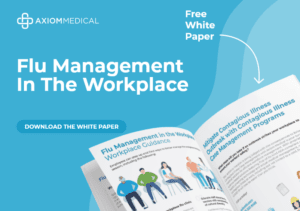Safety keeps people protected. Operations keeps people moving. When they’re out of sync, work slows, frustration rises, and safety-sacrificing shortcuts creep in. That’s a recipe for disaster.
Luckily, you don’t have to choose between safe and fast. The best teams make both work — together.
Here are three signs your safety processes might be holding back your operations, and what you can do to fix them:
1) You Track Different Scoreboards
Story: One team celebrates hitting their daily goals. Another is frustrated by unresolved incident reports. Both are right. Neither sees the full story.
Sign: Safety and ops track separate metrics that don’t connect.
Field Test: On a whiteboard, make two columns: Safety and Ops. List three metrics in each. Draw lines where they connect. No lines? That’s your gap.
Fix: Pick one shared metric to start. For most teams, it’s Time to First Incident Action — the time from report to first step in handling it. Aim for ≤15 minutes on day shift; ≤30 minutes after hours.
2) The Rules Don’t Match Reality
Story: A hazard is spotted mid-morning. The rule says it’ll be checked at the end of the day. By then, it’s either been ignored, patched together, or worked around. Not because people don’t care — but because the timing doesn’t match the pace of the day.
Sign: Safety checks happen too late or too far removed from where the work is done.
Field Test: Ask three team members: “What safety step do you tend to put off until later?” If you hear the same answer, that’s your bottleneck.
Fix: Move that step upstream. Do it when and where the issue happens, not hours later. A one-minute check in the moment beats a ten-minute fix after things pile up.
3) Safety and Ops Work in Silos
Story: An employee is cleared for modified duties after an incident is reported. Operations doesn’t find out until schedules are already set. Changes ripple through the day, slowing work and creating mix-ups.
Sign: People learn about important changes after they’ve already had to react to them.
Field Test: Pick one recent incident. Trace who learned what, and when. Count the handoffs. Anything over three handoffs is a delay risk.
Fix: One page, one flow: Hazard → Axiom Report → Injury Care Management → New Work Plan. Post it where both teams can see it. Agree on a rule: updates in 15 minutes or less.
When It Works
When you start measuring how safety and operations affect each other, the conversation changes. It stops being about blame and starts being about fixing problems. This approach helps both teams get better, together.
Ready to Get Safety and Operations on the Same Page?
At Axiom, we believe in designing systems that make safety part of the workflow — not something extra or separate. Watch our webinar Sync or Sink – Why Safety Must Align with Ops to Avoid Costly Mistakes with Dr. Scott Cherry and Major Account Strategy Leader, Lhoren Morris and Enterprise Major Account Manager, Callie Linden.
We’ll break down real-world examples, common missteps, and how to bring teams together around a unified process.










